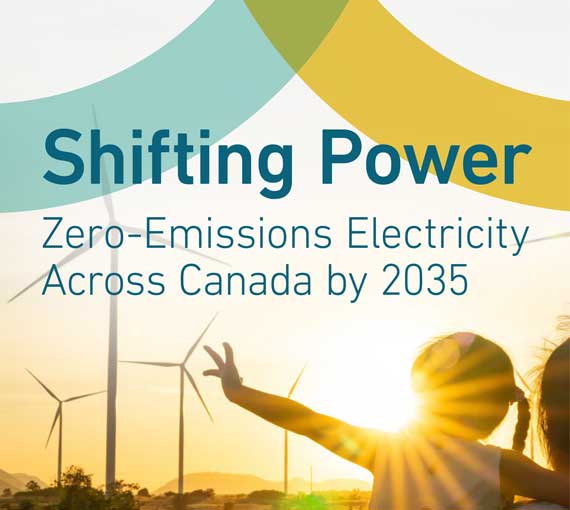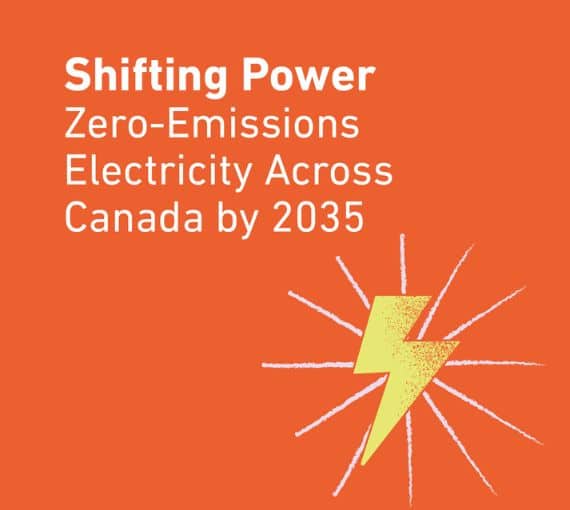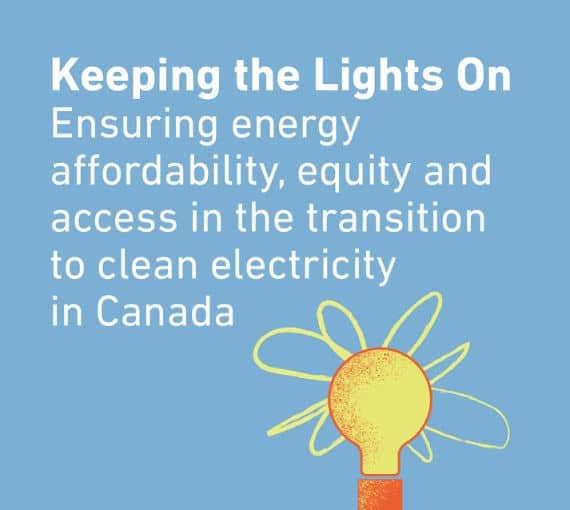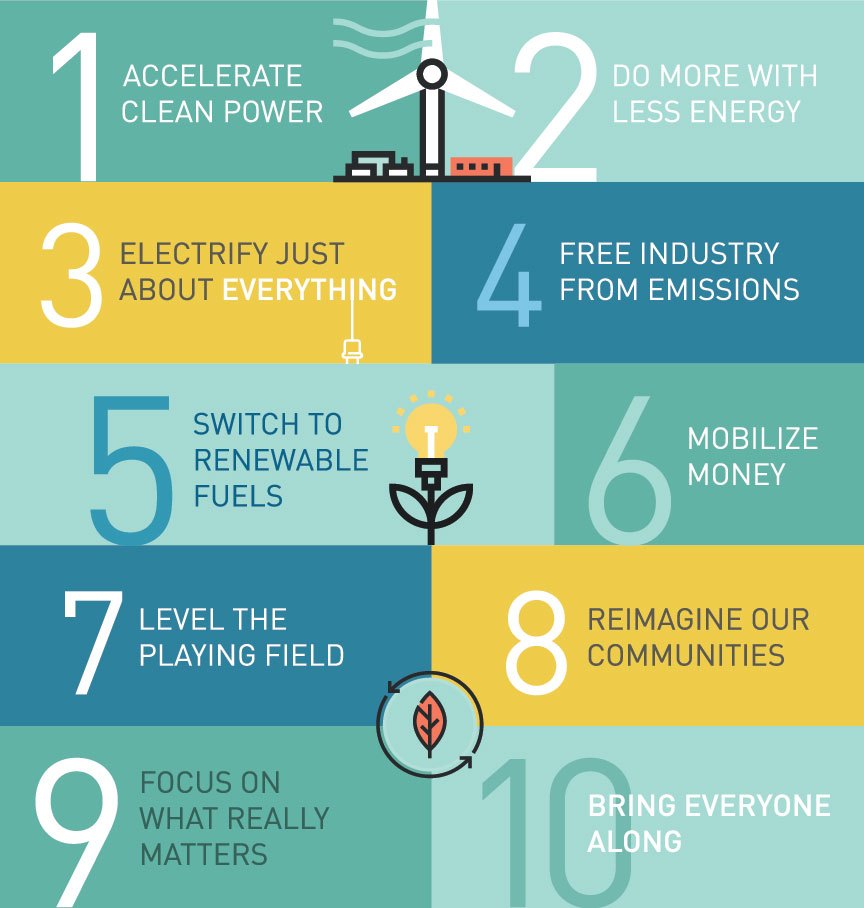A WIN FOR RENEWABLE POWER!
In December 2024 our campaign reached a major milestone, with the final publication of Canada’s federal Clean Electricity Regulations. These regulations are the most impactful policy ever on reducing emissions from electricity in Canada. It’s a win, and it was only possible with the dedicated support of tens of thousands of people living in Canada. However, these regulations are not perfect, and there are big loopholes for some fossil fuels.
We celebrate this win, and we commit to keep going until Canada reaches 100 per cent affordable, clean, reliable electricity – and until our energy system benefits the many, not the few.
See our full statement here.
We’re celebrating this significant step towards clean electricity in Canada because it means more affordable energy bills, thousands of good jobs, better health outcomes, and necessary climate action.
These regulations are just the start to Canada’s move away from expensive fossil fuels on the grid, and toward low-cost renewable electricity. We will continue to push for 100 per cent clean electricity everywhere in Canada.
The sooner we start building out this affordable, reliable, clean electricity system throughout Canada, the sooner we start seeing the benefits.
Stephen Thomas, Clean Energy Manager, David Suzuki Foundation
Renewable Power For All
Achieving 100 per cent affordable, reliable, emissions-free electricity everywhere in Canada by 2035 is a once-in-a-generation opportunity. Multiple Canadian studies have shown it’s possible — including our own first-in-Canada research. Right now, it’s about getting it done.
This target is in line with the latest climate science from the Intergovernmental Panel on Climate Change, modelling by the International Energy Agency, calls to action from United Nations secretary general António Guterres and Canada’s own international commitments to the UNFCCC and the G7 — and it’s in line with commitments of jurisdictions like the U.K. and the E.U.
Energy with benefits for communities
As we move to clean, renewable electricity, we also move to more affordable energy for households in Canada. This is in part because renewable electricity sources like wind and solar are now the cheapest forms of electricity in history.
Achieving this 2035 target will also come with hundreds of thousands of good-paying jobs in Canada, better air quality for everyone and real opportunities for Indigenous Nations to own, develop and benefit from renewable electricity projects on their territories.
These benefits are even more pronounced when renewable energy projects are owned by the people who live near them, either through public or community ownership, or if they’re owned by the Indigenous nations on whose land all energy projects are built.
Implementing ambitious Clean Electricity Regulations that deliver these immense benefits will be no small undertaking, but with the overwhelming support of 71 per cent of people living in Canada, we can make it happen.
Threats
Like most climate policies in Canada, this target is under attack by the fossil fuel lobby. They want loopholes to allow new fossil fuel projects to connect to the grid, are lobbying politicians to weaken or remove clean electricity rules. They are fighting for continued excess profits — and against the health, wellbeing and job opportunities for people in Canada.
This is why we need to work together to show support for 100 per cent affordable, reliable, renewable power for all by 2035.
Build Canada’s East-West Grid with Renewables
Canada’s grid is outdated. Help us push for renewable power and a truly connected energy future
What if we told you a future powered by 100 per cent renewable power was possible?
Imagine turning on the lights at home knowing the electricity you’re using is 100 per cent emissions-free. Guess what? Our modelling shows that we can have affordable, reliable, 100 per cent emissions-free electricity across Canada by 2035. We can make it happen with renewable sources like wind and solar, combined with energy storage, better transmission, and energy efficiency measures.
Our ground-breaking research

Key findings

- It’s possible: One hundred per cent zero-emissions electricity is possible in Canada by 2035 by primarily relying on wind and solar, and the technologies that enable them. TWEET THIS
- It’s reliable: Energy efficiency, energy storage, existing hydroelectricity and grid connections between provinces work together so we can meet our demands for electricity where and when we need it. TWEET THIS
- It’s affordable: Relying primarily on renewables like wind and solar is an affordable way to meet climate targets and the growing demand for electricity. It’s cheaper than business-as-usual alternatives. TWEET THIS
- It creates new jobs in clean energy: Construction, operation and maintenance employment alone will grow to more than 75,000 jobs a year, resulting in close to two million job-years between 2025 and 2050. TWEET THIS
- It meets climate goals: By switching out fossil fuel–powered electricity for cleaner, renewable sources, Canada can reduce emissions by more than 27 per cent, which is needed to meet its net-zero 2050 goal. TWEET THIS
- It’s a win for the environment: The path to clean electricity does not need new large hydroelectricity or nuclear generation and avoids expensive and immature carbon capture and storage technologies. With careful planning and siting, we can limit landscape and biodiversity impacts of a growing number of renewable projects. TWEET THIS
Decarbonizing electricity requires decolonizing power

Affordability, equity and access

How Canada can fast-track emissions reductions
The “Zeroing in on Emissions: Charting Canada’s Clean Power Pathways” study (also available in French) identifies 10 strategies and approaches that experts agree will be essential to fast-track Canada’s decarbonization efforts. This review of decarbonization studies and models is a litmus test for effective climate plans that can reduce emissions to near zero by 2050.

FAQs
-
Yes. The results challenge those who claim that renewables can’t play a leading role in the clean electricity transition. The sun may not always shine and the wind may not always blow, but the combination of solutions that are modelled in this report shows how a grid largely powered by renewables can deliver clean electricity reliably where and when it is needed across the country. Improvements to energy efficiency and battery storage technologies are essential.
The scale of transformation is daunting. It would require an average annual build-out of wind and solar electricity projects never before seen in Canada. An average of more than 2,200 new four-MW wind turbines would be installed every year and more than 160 new 10-MW solar farms would be built each year. Interprovincial transmission will also need to expand at an unprecedented rate. An equivalent rate of adding renewable projects is already planned in places like Germany. By early 2022, Germany had installed 28,000 onshore wind turbines. By 2025, the country expects to be adding 10 GW of wind annually, similar to what our modelling scenarios would require.
-
Yes. Building out wind and solar at this scale would affect large areas. Careful planning is needed to ensure that renewable infrastructure and transmission lines are located in landscapes in ways that minimize negative impacts on biodiversity. Where possible, all infrastructure projects should be evaluated for their potential to support biodiversity recovery and incorporate natural infrastructure.
Impacts differ. In some agricultural landscapes, for example, wind farms can be located with relatively little impact. Areas that supply critical habitat for migratory birds would likely be poor candidates for a wind farm location. Likewise, prime agricultural lands are better suited for food production and would be a poor choice, in most instances, for locating a solar farm (though solar PV on farm buildings make good sense and can reduce farmers’ energy costs). Where possible, existing linear infrastructure, such as railway rights-of-way or highway corridors, should be considered for transmission lines to avoid additional habitat fragmentation.
-
The electricity system of the future will operate differently than the one we have today. Sharing wind, solar and hydro resources within and between provinces will make Canada’s electricity grid more reliable and flexible. Connections between regions together with energy storage and other grid upgrades will make it easier to deliver electricity where and when it’s needed.
Sharing electricity between provinces will also cost less as the grid expands than having provinces rely on their own, separate systems. All provinces, regardless of their current electricity systems, can realize real benefits to a more connected electricity grid.
-
Indigenous world views and knowledge need to be incorporated and respected within broader societal and economic value systems;
Meaningful, rights-based and consent-based consultation must become common practice for all clean energy projects;
Existing Indigenous leadership needs to be honoured and advanced through support for capacity, ownership opportunities and jobs;
Indigenous leaders require a seat at decision-making tables, as decarbonizing electricity must also mean decolonizing power structures;
Solving systemic infrastructure gaps for Indigenous communities through focused just transition measures must be prioritized as part of the clean energy transition; and
Economic reconciliation must be central to the clean energy transition by removing barriers to accessing financial capital, ownership and other project benefits.
-
All models have limitations and are not predictive by design. The modelling simplifies the real world, seeking only least-cost solutions to building out future generation, storage and transmission capacity to meet future energy demand within scenario settings and constraints. Other factors will need to influence the grid of the future, including local preference for what renewable generation is built where, how provincial grid interties are strengthened and how electricity markets are structured. These pathways need to be technically feasible and socially acceptable.
Off-grid and remote electricity systems and territorial grids or non-integrated electricity systems are beyond the scope of this report. Technologies such as offshore wind, geothermal generation, distributed energy resources, demand response, green hydrogen and hybrid projects (e.g., a project where solar generation and battery storage are bundled) were also beyond its scope.
-
Government has already made concessions to industry, including delaying the release of the Clean Fuel Regulations from 2020 to 2023, and removing heating oil and gaseous and solid fuels from the agreement, leaving only gasoline and diesel covered. Industry has had three years to prepare for these regulations.
-
The Clean Fuel Regulations are a polluter-pay policy focused on refinery operations. They include flexibility to incentivize innovation. It is irresponsible for industry to pass on increased costs to consumers when their own inaction is causing problems.
-
Delaying the implementation of these regulations is not a viable option. We are already experiencing Canada’s worst wildfires in history and we’re just near the beginning of summer. Climate regulations like Clean Fuel Regulations are needed to drive down emissions and lessen the impacts of severe and more frequent fires, floods and droughts. Climate inaction or delay costs us more in the long run.
-
Yes. They are based on a worst–case scenario by the PBO that ignores the benefits, overstates the costs on household budgets and neglects the costs of using alternative mechanisms to reduce emissions.
-
There is much economic potential in climate action: the regulations position Canada to compete in the global decarbonizing economy, attracting new investments and creating tangible benefits.
Expert views
Power up on Earth Day: Why a clean grid matters at the ballot box
This Earth Day, Canadians are preparing to head to the ballot box on April 28. As we do, a clean, connected, community-led electricity system is ready to be a central solution to the challenges we face.
Clean Energy Manager
As Trump uses Putin’s playbook, renewables are Canada’s best defence
U.S. President Donald Trump’s aggressive economic tactics are threatening to send Canada into levels of economic chaos not seen in decades. This is compounding the affordability and climate crises we’re already facing in our country. While this is a time of enormous challenge it also presents an opportunity for change.
Clean Energy Manager
The benefits of renewable electricity are biggest part of the story
Canada has a goal of 100 per cent zero-emissions electricity by 2035. The benefits of adding wind and solar to power that electricity go deeper than fighting climate change; they include more affordable energy bills, healthier homes and more good quality jobs.
Clean Energy Manager
No room for fossil fuels in Canada’s clean electricity regulations
Canada’s federal government faces three risks to reaching zero-emissions electricity by 2035: regulations must actually achieve a zero-emissions electricity grid by 2035 while avoiding new fossil fuel generation being commissioned. Interim measures with signals to utilities are needed between now and 2035.
Clean Energy Manager
Clean energy reduces cost-of-living challenges
The cost-of-living crisis and the climate crisis share the same root cause: expensive oil and gas. Transitioning to clean electricity protects not just the planet but also pocketbooks. The lowest electricity costs are found in provinces with the cleanest grids.
Former Communications and Policy Specialist


